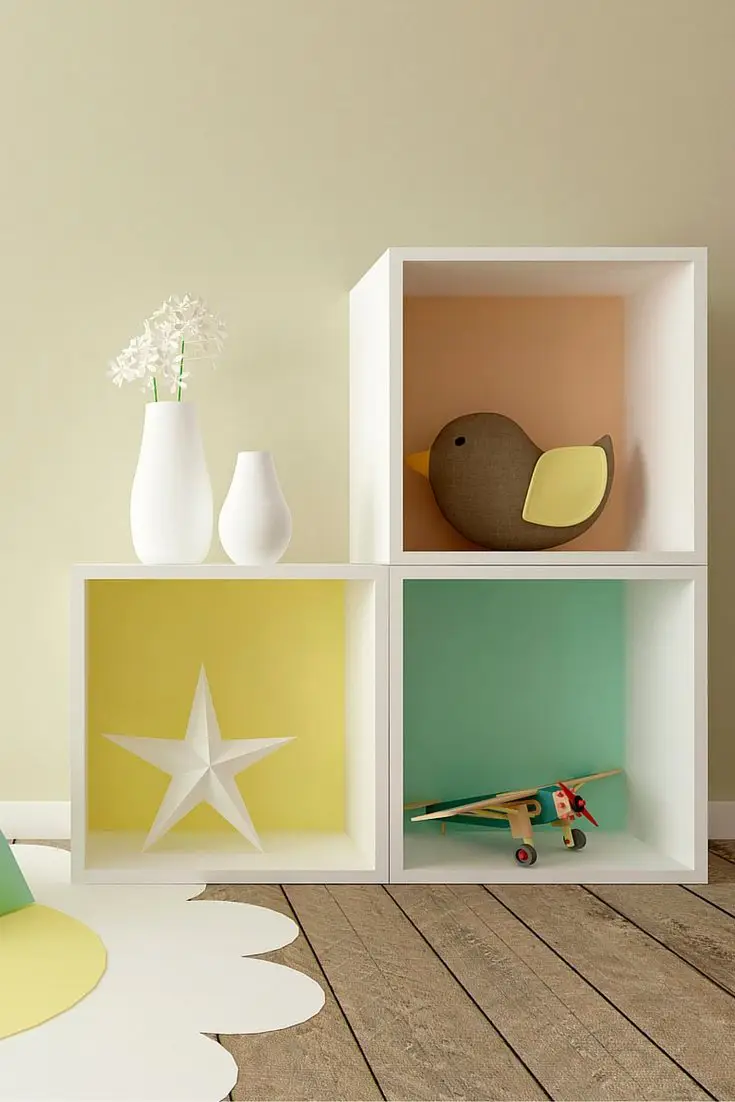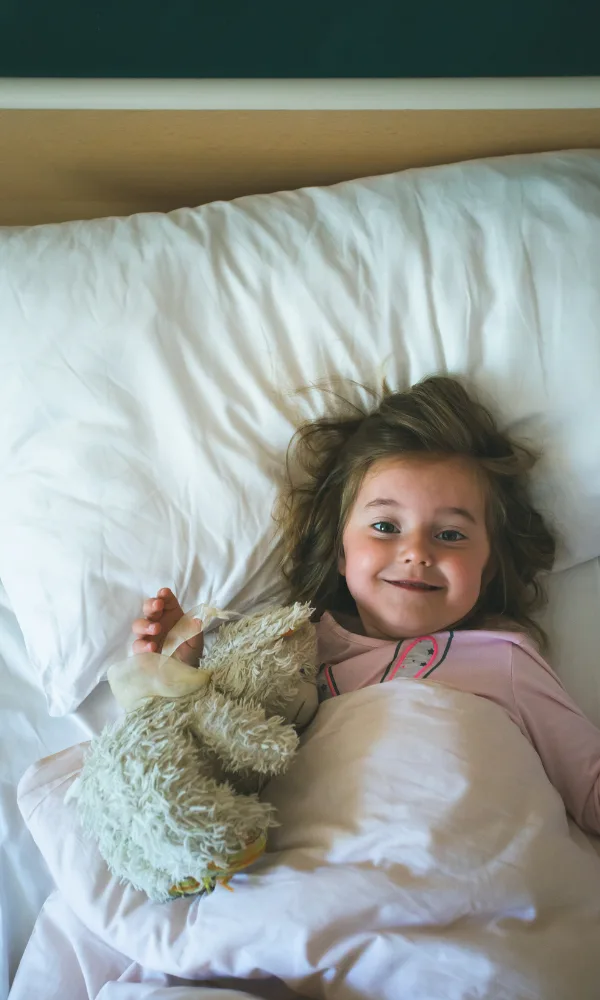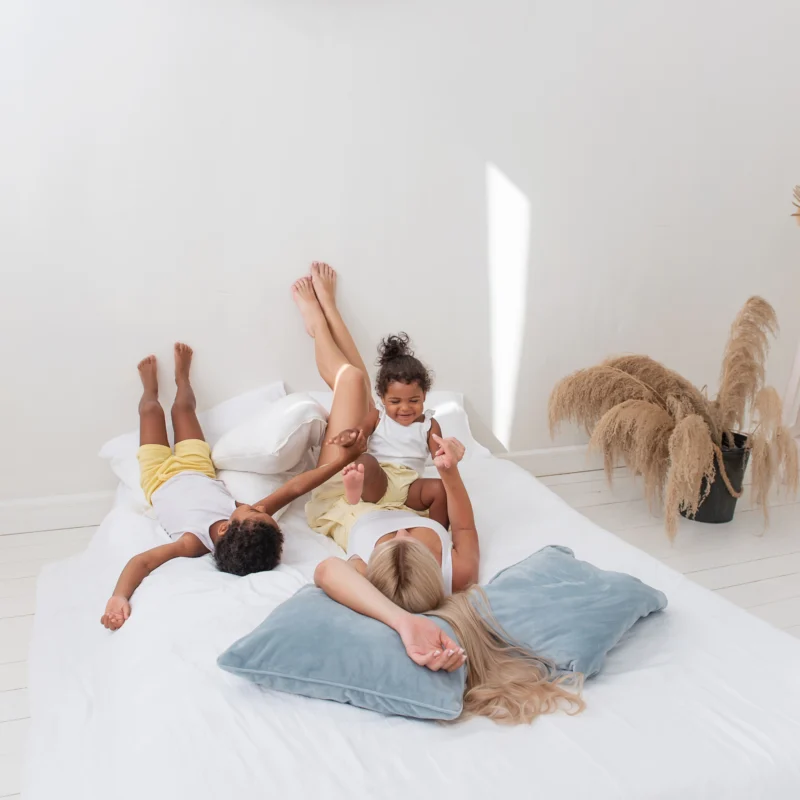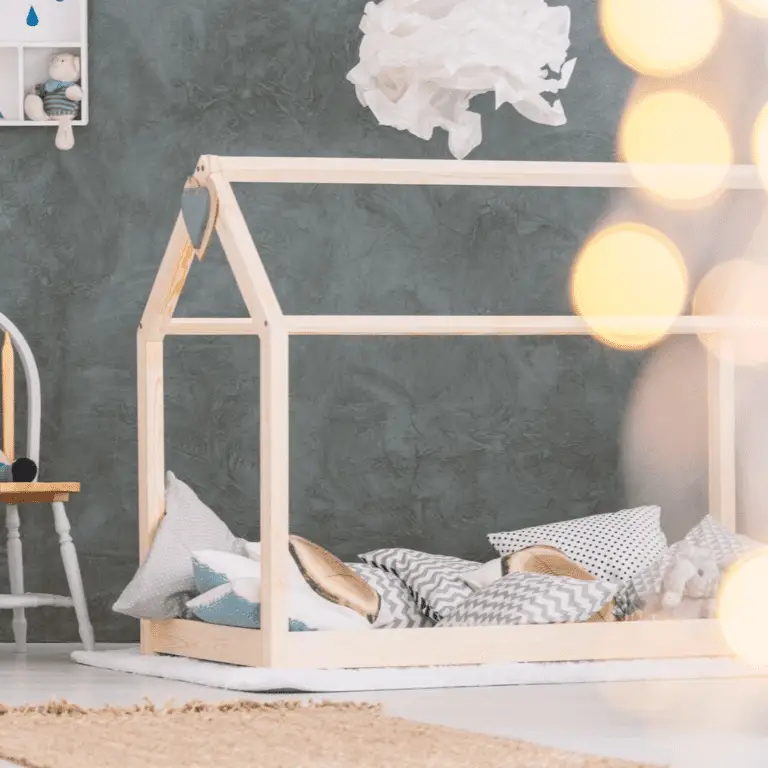I earn commissions from my affiliated links. Please see my disclosure policy for more details.
The Montessori method of teaching and parenting encourages self-care, early autonomy, and natural curiosity. You can incorporate its principles into almost any situation within the home. The Montessori bedroom is a key part of that environment. This post will go over the Montessori floor bed for babies and toddlers.

What makes a Montessori bedroom?
A Montessori bedroom, inspired by the educational philosophy of Maria Montessori, is designed to promote independence, freedom of movement, and a child’s natural development. Here are some key elements that make up a Montessori-style bedroom:
- Low Bed: A Montessori bedroom typically features a low bed or mattress placed directly on the floor. This allows the child to get in and out of bed independently, promoting freedom of movement and a sense of autonomy.
- Floor Mattress: Instead of a traditional crib or toddler bed with rails, a floor mattress is used to provide a safe and accessible sleep space. It allows the child to climb on and off the bed unassisted and reduces the risk of falls.
- Child-Accessible Furniture: The furniture in a Montessori bedroom is designed to be child-sized and easily accessible. This includes low shelves, child-sized tables and chairs, and storage units placed at the child’s height. It enables the child to independently access their belongings and engage in self-directed activities.
- Order and Organization: A Montessori bedroom emphasizes order and organization. Everything has its designated place, and storage solutions, such as open shelves or low drawers, are provided to encourage the child to take responsibility for tidying up their space.
- Minimalism: A clutter-free environment is important in a Montessori-style bedroom. Keeping the room minimalistic and avoiding excessive toys or decorations allows the child to focus on their chosen activities and fosters a sense of calm and concentration.
- Safety Considerations: Safety is paramount in a Montessori bedroom. Outlets are covered, sharp edges are cushioned, and heavy furniture is securely anchored to the wall. This ensures a safe and child-friendly environment.
- Natural Materials: Montessori spaces often incorporate natural materials, such as wood, cotton, and wool, to create a soothing and aesthetically pleasing environment. These materials are chosen for their tactile qualities and connection to the natural world.
- Child’s Personal Touch: A Montessori bedroom encourages the child to express their personality and interests. Personalized artwork, photographs, or items that hold significance to the child can be displayed, fostering a sense of ownership and belonging.
- Accessibility to Materials: Montessori bedrooms provide access to developmentally appropriate materials and activities that promote learning and exploration. This may include books, puzzles, art supplies, and age-appropriate toys that encourage independent play and learning.
- Safety Gate or Low Barrier: For younger children, a safety gate or low barrier may be installed at the entrance of the bedroom to ensure a safe environment while allowing the child to explore and move freely within their space.
Remember, while these elements are common in a Montessori-style bedroom, the most important aspect is to create a space that supports the child’s independence, freedom, and natural development, while considering their unique needs and interests.

How do you plan a Montessori bedroom?
Planning a Montessori-style bedroom involves careful consideration of the child’s needs, safety, and promoting independence. Here are some steps to help you plan a Montessori bedroom:
- Understand the Montessori Philosophy: Familiarize yourself with the Montessori educational philosophy and principles. Understand the emphasis on independence, freedom of movement, and fostering the child’s natural development.
- Involve the Child: If possible, involve the child in the planning process. Consider their preferences, interests, and needs. This helps create a sense of ownership and encourages their engagement with the space.
- Assess the Space: Evaluate the available space in the bedroom and consider how it can be optimized for the child’s activities and needs. Take measurements and identify any limitations or safety concerns that need to be addressed.
- Floor Bed or Low Bed: Choose a floor bed or low bed that is safe and accessible for the child. Ensure it is placed in a suitable location within the room, allowing for easy movement and visibility.
- Child-Sized Furniture: Select child-sized furniture, such as low shelves, tables, chairs, and storage units. These should be at a height that allows the child to independently reach and use them comfortably.
- Organize for Independence: Plan the layout and storage solutions to promote independence and order. Provide open shelves or low drawers where the child can easily access and put away their belongings. Consider using labeled baskets or trays to categorize and organize items.
- Create Activity Zones: Create designated areas for different activities, such as reading, playing, and dressing. Use rugs, mats, or designated spaces on the floor to define these areas visually.
- Safety Considerations: Ensure the bedroom is child-proofed and safe. Cover electrical outlets, secure furniture to the wall, and eliminate any potential hazards. Use soft materials or corner protectors to cushion sharp edges.
- Natural and Stimulating Materials: Incorporate natural materials, such as wood, cotton, and wool, into the room’s design. Offer age-appropriate toys, books, and materials that stimulate the child’s curiosity and encourage exploration.
- Personalization and Comfort: Allow the child to personalize their space with artwork, photographs, or items of personal significance. Create a cozy and comfortable environment by adding soft cushions, blankets, and pillows.
- Flexibility for Growth: Consider the child’s future needs and plan the room with flexibility in mind. Ensure that the space can adapt as the child grows, allowing for adjustments and modifications as necessary.
Remember that each child is unique, and their Montessori bedroom should be tailored to their individual needs and interests. Regularly assess and adjust the environment based on the child’s development and changing requirements.

Montessori at Home: The Montessori Bedroom
- Lose the crib. Place a mattress directly on the bedroom floor to allow and encourage safe exploration and freedom of movement. Without the confinement of a crib, your children can come and go as desired, which often results in less crying and more restful sleep. Respect the child’s ability to put himself to sleep.
- Make all furniture child-size including all book and toy shelving easily accessible.
- To reduce nighttime stimulation, allow only quiet, age-appropriate toys in the bedroom. Examples include soft toys, blocks, puzzles, and books.
- Decorate using natural materials that are free from chemicals.
- Hang pictures & place mirrors low enough to meet your child’s eye
- Provide both natural light and an easy way to darken the room as needed.
Related Read: My All-Time Favorite Montessori Mobiles for Your Baby’s Room
What is a Montessori Bed?
When Should I Start My Montessori Bed?
Many Montesssori parents co-sleep or have a child sleep in a bassinet near their bed. Placing the child in a floor bed can happen at any point but typically parents begin the process around 2 months old. Make sure the child is safe and monitor the child often in those early months. Note that a Montessori toddler bed is no different from a floor bed for your baby. Simply a mattress on the floor.

Making the Most of Montessori at Home: the Montessori Bedroom
A carefully planned bedroom can do wonders to improve sleep patterns, but it will work even better when backed by a few practical guidelines. Montessori parenting experts recommend the following tips.
- Avoid stimulating activities, television shows, and games close to bedtime.
- If you have a newborn, expose him or her to natural light patterns to help encourage the production of melatonin, which regulates the human sleep cycle.
- Try a gentle, calming massage or a warm bath before bed.
Related Read: How to Create the Perfect Montessori Bathroom
A bedroom is a great place to integrate Montessori into your home. The decor is beautiful and can be created easily and inexpensively.
Related Read: A Guide to Designing Your Montessori Playroom
Related Read: All You Need for a Montessori Baby Bedroom
Related Read: Our Montessori at Home Environment
Marnie

